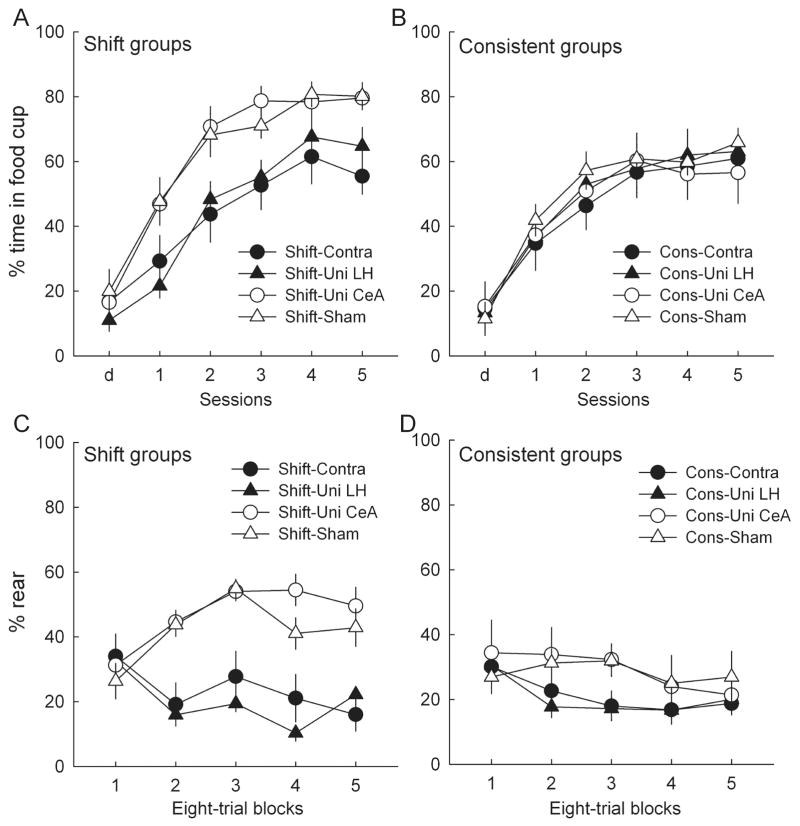Fig. 10.
Acquisition performance in the surprise and test phases of experiment 3. Surprise-induced enhancements in associability are indicated by more learning of a light–food association in rats trained in the phase 2 shift condition (A and C; Table 1) than in rats trained in the phase 2 consistent condition (B and D). (A and B) Food cup responding to the light conditioned stimulus (CS) on the second of two surprise sessions (labeled d) and the five test sessions. Of the rats trained in the shift condition (A), those with unilateral lesions of the amygdala central nucleus (Uni-CeA) or with sham lesions showed more responding in the test sessions than rats with orexin-saporin lesions of the lateral hypothalamus (LH), either alone (Uni-LH) or contralateral (Contra) to a unilateral CeA lesion, and more responding than any rats in the consistent condition (B). LH-lesioned rats in the consistent condition were unimpaired relative to rats without LH lesions (B). (C and D) Conditioned orienting (rear) responding in the test sessions. As with food cup responding, rats without LH lesions showed more learning after the shift treatment (C) than after the consistent treatment (D). As in experiments 1 and 2, rats with LH lesions failed to show acquisition of conditioned orienting responses (ORs) to the light paired with food in the test sessions, regardless of training condition. Entries are mean ± SEM.

